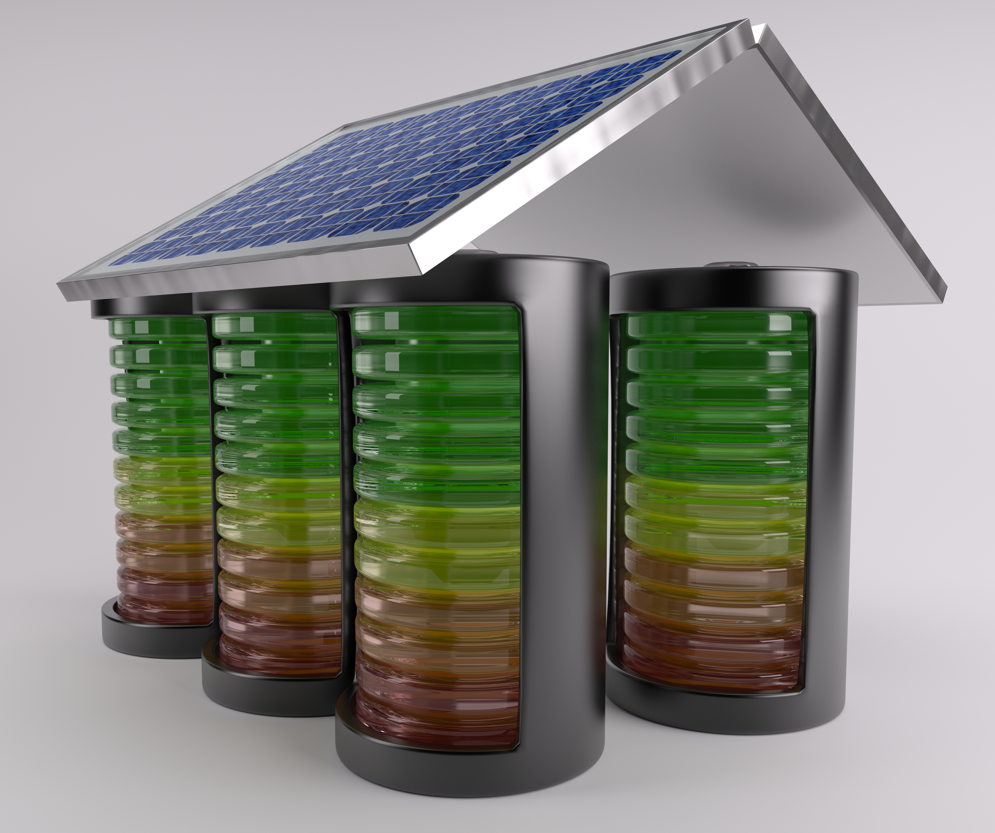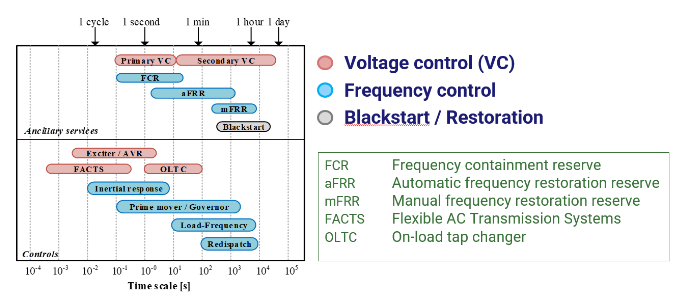1.4.2 Lecture Notes Control of Renewables on Grid Integration
Course subject(s)
1. Integration of Renewables Into the Electricity Grid

Image from freepik
This lecture will focus on the following points:
- Explaining the future multi-energy system
- Describing the dynamic performance of a multi-energy system
- Elaborating on the needed updates to operate a multi-energy system
The future multi-energy system
In the future, the multi-energy system (MES) will consist of AC and DC technologies. These technologies will be applied for the integration of different users or different energy systems. Examples of different energy systems are:
- Electrolysis for hydrogen
- Compressed-air energy storage
- Electrical batteries
Another aspect that needs to be considered is the different scales on which the MES will operate. The energy systems can operate on small scale (between kilowatts and megawatts) or on large scale (between megawatts and gigawatts).
The dynamic performance
The dynamic performance of a MES is studied by investigating a stability analysis, which looks at the time-varying components of a power system as a result of conditions and disturbances. Stability can be expressed as the ability to survive disturbances. This means that the system keeps performing at the same operating point or it reaches a different (but stable) operating point.
If something happens in the energy system, for example the disconnection of a generator, the operating condition of the system will change. The system is stable if the system will return to the original operating point or a different stable operating point. A system is unstable if it does not return to a stable operating point, and it will uncontrollably go away from the original operating point without returning to this.
There are different challenges that the MES will face in the future regarding the dynamic performance. One of the challenges is that it must fulfil the pre-defined requirements of the grid. Examples of requirements are active power balance and frequency control, reactive power and voltage control, and rotor angle stability.
In the figure below, the different types of controls and ancillary services are shown at different timescales. The two main controls are voltage control and frequency control.
The needed updates for a MES
To guarantee secure operations, there are some upgrades needed for control systems. One of the upgrades is a new control method to manage the frequency stability. This method concerns grid forming by active power injection from a wind generator. These injections are done based on measured deviations in the active power balance. Simulations of a futuristic situation in the Great Britain have shown that a wind generation share of 70% can be feasible with this method.
Another example of an upgrade is a new control method for transient stability. This example uses so-called ‘Synchronizing Power-Angle Modulation’, which uses measured relative angle deviations between the synchronous generators in a system with a big share of renewables. The method helps to reduce the magnitude of the rotor angle, which prevents a disconnection of the synchronous generators.
Conclusion
This lecture discussed three main topics. First the concept of a future multi-energy system is discussed. After this, the dynamic response of the MES is discussed, which included a short definition of stability. The last topic contained examples of needed updates for a MES for the future. The two most important research areas on this topic are:
- Developing power electronic converters to replace conventional generators
- New control methods that can deal with fast dynamics.
Further reading
If you are interested in this topic, you can read this brochure. 25 partners from 13 countries did research in the “MIGRATE” project, which studies how the electric grid has to change to be compliant with the energy transition.

Technology of Intelligent and Integrated Energy Systems by TU Delft OpenCourseWare is licensed under a Creative Commons Attribution-NonCommercial-ShareAlike 4.0 International License.
Based on a work at https://online-learning.tudelft.nl/courses/technology-of-intelligent-and-integrated-energy-systems/




